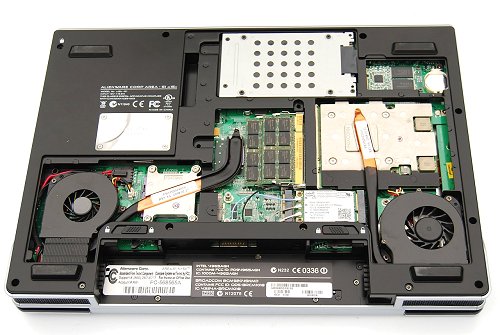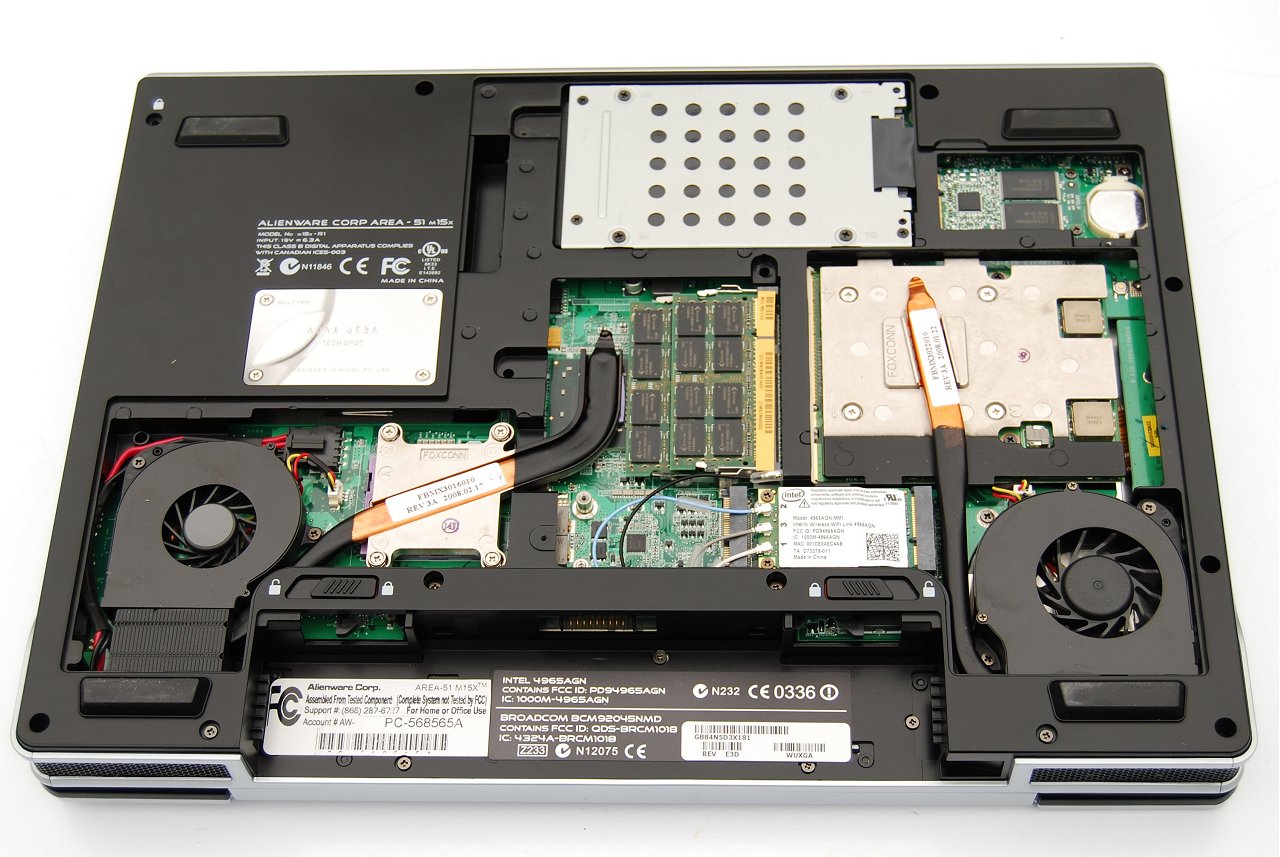Internal design
The internal workings of the Alienware Area-51 m15x are fairly typical for that of a 15.4" notebook, though they have managed to make everything fit rather well.
The GPU and CPU are cooled separately, though the latter shares its cooler with the Intel GM965 chipset.
The Area-51 m15x can be configured with a number of different CPUs and GPUs, but as previously mentioned our sample came equipped with the fastest possible configuration, which means we get to test in full how well this gaming laptop can perform, and how well does its cooling can keep up, too.

Turning the Area-51 m15x upside down, and removing the back plate shows two blower-type fans that are designed to draw cool air in from under the notebook, push it over the heatsinks, where it then exits from the rear.
The fan on the left cools the heatsink that is connected to the CPU and chipset via a single copper heatpipe. The fan on the right side is dedicated to cooling the heatsink covering the GPU, again using a single copper heatpipe.


Sitting snug between the chipset and GPU are two dedicated SO-DIMM slots for dual-channel DDR2 memory. These memory slots are very easy to access making the installation of additional memory painless. Below the SO-DIMM slots is an internal Intel PRO Wireless 4965 b/g/n mini-card with integrated Bluetooth 2.0 which is part of the standard configuration.
Although the Area-51 m15x is not designed for users to make their own upgrades, we found it quite easy to remove the CPU and GPU. The hard drive, which is located at the front of the notebook, is also easy to remove should you want to upgrade it.
Technically the Area-51 m15x only supports a single internal hard drive, while a second removable drive can be installed into the Smart Bay. Keep in mind that the Smart Bay Swappable hard drive is an optional extra and a 320GB drive will cost an extra $300 from the manufacturer.

Finally, in the top right corner of the Area-51 m15x is a removable CMOS battery, along with a rather interesting card.
This little card is called "Intel Turbo Cache Memory" and if you are willing to spend an additional $50 this 1GB memory card is designed to accelerate data transfer speeds. Our fully-equipped sample also carried this card, though we are not entirely convinced that it is necessary. Also to keep in mind, this feature is only supported by Windows Vista.
